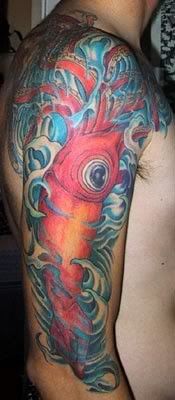Alfonsina Storni -Yo en el fondo del mar-
Published Tuesday, September 27, 2005 by Spyder.En el fondo del mar
hay una casa de cristal.
A una avenida
de madréporas
da.
Un gran pez de oro,
a las cinco,
me viene a saludar.
Me trae
un rojo ramo
de flores de coral.
Duermo en una cama
un poco más azul
que el mar.
Un pulpo
me hace guiños
a través del cristal.
En el bosque verde
que me circunda
—din don... din dan—
se balancean y cantan
las sirenas
de nácar verdemar.
Y sobre mi cabeza
arden, en el crepúsculo,
las erizadas puntas del mar.
Tuvo como amigos a escritores, pensadores y poetas como Horacio Quiroga, José Ingenieros o Federico García Lorca. Colaboró en la creación de la Sociedad Argentina de Escritores. Sobrellevó un cáncer hasta que, abandonada del amor, a los 46 años sintió que la abrumaba la desesperación. Antes de entrar en el mar escribió su último poema: "Quiero dormir".
Labels: Literatura
Arte y pulpos -Ken Wong-
Published Monday, September 26, 2005 by Spyder.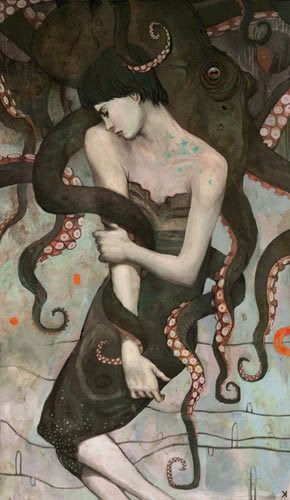
La ilustración está hecha por photoshop, y su creador es el ilustrador australiano Ken Wong.
Su página se puede visitar aquí.
Sobre Ken Wong:
"My name is Ken Wong, I'm a freelance artist/illustrator/designer from Australia, currently living in Hong Kong.
I've done visualisation and art direction work for computer games, comics, films and toys, for clients including Nival Interactive, Enlight Software, American McGee, Cosmos Magazine Australia, Art Asylum, Waxploitation Records and KingsIsle Entertainment. I have spoken at the Animex Animation and Games festival in the UK and the Red Stick Festival in Louisiana. My work has appeared in the Spectrum and Exposé art annuals and a handful of magazines.
People are always asking what my influences are. A start to such a list would be: Gustav Klimt, Alphonse Mucha, Mike Mignola, Ashley Wood, Moebius, the Smashing Pumpkins, Pixar, and Star Wars.
I have trouble using can openers, photocopiers and most food ingredients."
Labels: Artistas
Sobre el pulpo imitador
Published Saturday, September 24, 2005 by Spyder.Labels: Características
Mimic Octopuses
Published Friday, September 23, 2005 by Spyder.By Dr. Roy Caldwell and Christopher D Shaw - Dr. James B. Wood, Editor
There is no question that the mimic octopus and its relatives such as wunderpus are remarkable animals. Whether they are capable of the repertoire of behaviors attributed to them remains to be seen. Even if their mimetic abilities are limited, we must marvel at the images of these animals that have been captured on film and video and are displayed around the world. However, as the animals become better known, they are also becoming more desirable for public aquarists, scientists and hobbyists alike. The pressures to acquire and attempt to keep and display them are rapidly increasing. It is not uncommon to see requests for such animals and often the amount of money offered for them is staggering - $100 and up. At this point, I think we should all take a deep breath and think seriously about the biology of this species, what such bounties are likely to mean for its survival, and what motivates us to want a mimic for our very own. I want to make it clear from the onset that I am not against the importation of marine life where its collection did not threaten existing stocks. I certainly support efforts to culture a variety of organisms for public, commercial and private display. Over the years I have strongly supported the aquarium industry because I firmly believe that public awareness of, and interest in, marine diversity offers one of our best routes to marine conservation. However, I feel strongly that because of its notoriety and scarcity, mimics present a special case that deserves our immediate attention. If there is one thing that we know about mimics, it is that they are rare. Since they were first recognized, very few have been collected or observed in the wild. Even in areas such as the Lembeh Straits and Bali, which have been extensively dived by knowledgeable naturalists, sightings have been infrequent and sporadic. Only dozens have been seen, not hundreds or thousands. Yes, it is a big ocean. However, the habitats apparently suitable for the mimic are limited, easily accessible and the number of people (including collectors) diving on them is rapidly increasing. In a few areas, individual mimics are occasionally identified by underwater guides who take divers to see them. Much of what we know of these animals comes from such sightings. With the bounties being offered for these animals, it is increasingly likely that some collectors who know the whereabouts of mimics will be unable to resist the temptation and these animals will end up in the collection bucket. You do not want to know the fate of most cephalopods collected in Indonesia for export. By offering importers high prices for mimics, I am deeply concerned that we are creating a market that rapidly will exhaust the supply.
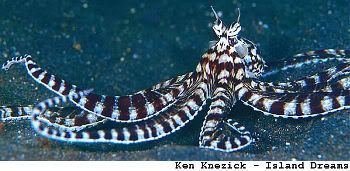
I would urge everyone, amateurs and professionals alike, to curtail your desire to display these animals. I hope that with our help they can continue to survive in the wild where they can be studied, photographed and appreciated. These animals have enough problems without our hastening their doom. The coastal habitats in which they occur are some of the most heavily impacted in Indonesia. Coastal run off and mining are eliminating them at an alarming rate. To my mind, risking several of these rare beasts so that one might live for a few months (with no hope of successfully reproducing) in an aquarium just is not worth the price. It would be great if we could acquired a sufficient number of specimens to keep them in aquaria around the world, learn their habits and how to culture them, etc. I would strongly support this for a species like O. cyanea that is widely distributed. However, there does not appear to be the population base needed to support intense collection of mimics. With modern communications, mimics are popping up everywhere in print, on television and on the web. People around the world know about mimics and want one. The market isn't just in the US, Germany, and Japan, but extends around the world. How many public aquaria would like to exhibit one? How many scientists, myself included, would dearly love to have a few to study? How many amateur cephalopod enthusiasts would shell out big bucks to have one? And how many hobbyists walking into their local LFS would put down their money just because the mimic looks so cool? By promoting this exceptional animal I'm afraid that we have created a demand that may do it in. Sure, a few specimens were needed to document the species and the occasional animal will make its way into the market place. Stuff happens and I cannot fault anyone for taking advantage of it. All I'm asking is that we do everything in our power not to encourage or support the deliberate collection of mimics. I honestly fear that if we cannot stem their collection, there will be no mimics to wonder at in a very few years...
El artículo puede leerse completamente en The Cephalopodo Page.
Labels: Características
Pulpos caminantes -Octopuses occasionally stroll around on two arms-
Published Wednesday, September 21, 2005 by Spyder.By Robert Sanders, Media Relations
BERKELEY –Two species of tropical octopus have evolved a neat trick to avoid predators - they lift up six of their arms and walk backward on the other two.
This first report of bipedal behavior in octopuses, written by University of California, Berkeley, researchers, will be published in the March 25 issue of Science.
When walking, these octopuses use the outer halves of their two back arms like tank treads, alternately laying down a sucker edge and rolling it along the ground. In Indonesia, for example, the coconut octopus looks like a coconut tiptoeing along the ocean bottom, six of its arms wrapped tightly around its body.
UC Berkeley graduate student Crissy Huffard clocked the two-legged speed of one coconut octopus at two and a half inches per second, while a second individual zoomed along, backwards, at five and a half inches per second. This is faster than they can crawl, but probably slower than they jet around.
The other type of octopus, which camouflages itself as algae in tropical waters from Indonesia to Australia, looks like a sea monster scooting along the sea floor on two legs. Huffard filmed this creature off Australia's Great Barrier Reef easily rolling over rocks and other obstacles.
"This behavior is very exciting," said Huffard, who first noted it five years ago in the coconut octopus but only recently was able to capture both types of octopuses on film. "This is the first underwater bipedal locomotion I know of, and the first example of hydrostatic bipedal movement."
Huffard and coauthor Robert Full, professor of integrative biology at UC Berkeley, think that this bipedal walking is a strategy octopuses use to backpedal away from predators while remaining camouflaged. Octopuses camouflage themselves by changing both color and shape, but when startled and forced to move quickly, they have to give up their camouflage.
Not so when walking.
"This bipedal behavior allows them to get away and remain cryptic," said Huffard.
An octopus is basically a water-filled balloon, but with the fluid contained in muscle cells rather than an open cavity. It keeps its shape not with an internal or external skeleton but by hydrostatic pressure, sometimes called a hydrostatic skeleton or muscular hydrostat. Normally, it crawls over the bottom of the ocean, pushing and pulling with the suckers on its eight arms, or jets backwards through the water. All these movements are accomplished through muscles that squeeze and bend the fluid-filled arms and body.
Full said he was "blown away" when Huffard showed him video of the octopuses last year. He urged her to obtain more video that could be used to more clearly see how they walk, and encouraged her to publish the observations. Full, who looks at many types of animal locomotion and seeks to determine how animals control such movements, sees a revolutionary new principle in how the octopus uses its arms - one that could be used in making soft, squishy robots.
"Understanding behavior like this could usher in a new frontier of 'soft' robotics," in contrast to the rigid robots common today, he said.
"New artificial muscles that can stiffen at will could reproduce this walking behavior," said Full. "The wonderful thing about soft robotics is that it's infinitely adaptable, unlike the few degrees of freedom of rigid robots."
Huffard first noticed the coconut octopus, Octopus marginatus, dancing along the sand in 2000, while helping a film crew obtain octopus footage off the island of Sulawesi in Indonesia. The octopus, with a head about two inches long, lives on the sandy bottom in water some 20 to 30 meters (60 to 100 feet) deep, among lots of sunken coconuts, and even hides out in the shells of coconuts, drawing two halves around it to hide.
Its weird walking behavior, no doubt noticed by numerous other divers, has apparently never been analyzed in the scientific literature, she said.
"We know so little about these animals," Huffard said, noting that only 200 of perhaps 300 species of octopus from around the world have been described. She herself is writing up descriptions of five new octopuses, one from Hawaii and four from Tonga.
She filed away her observations about O. marginatus, however, to concentrate on her thesis, which involves the behavior of another Indonesian octopus, Octopus (Abdopus) aculeatus. This creature with a head the size of a walnut inhabits the intertidal zone, foraging along sandy bottoms among grasses and hiding out in tidepools or burying itself in the sand at low tide. To camouflage itself, it sometimes coils its two front arms and raises them in a pose that somewhat resembles algae.
Two years ago, while Huffard was visiting her thesis advisor, UC Berkeley integrative biology professor Roy Caldwell, on Lizard Island 45 miles north of Cairns, Australia, she decided to take a look at local members of that same species. She snorkeled out to capture one and, after putting it in a tank at the research station, was surprised to see it also walking on two arms.
"It seemed like it was walking on little conveyor belts," she said. She suspects that the reason she never saw this behavior in O. aculeatus in Indonesia, despite some thousand hours of snorkeling over five years, is that in Indonesia, the currents are often too strong for such behavior.
Both Huffard and Full are interested in how these octopuses control their unusual form of bipedal locomotion. Recent articles shed light on this. Israeli scientists have reported that octopus arms execute incredibly complex curling and bending motions even when cut off. Apparently a nerve ganglion in each arm can send clock-like signals down the arm to produce rhythmic movements, such as bends propagating down the arm, irrespective of whether there is a head and brain to control them. Similar movements seem to be involved in two-legged walking.
"These are stereotyped movements that don't need feedback from the brain," Huffard said.
"A lot of behavior is built into the ganglia of each octopus arm, so that seemingly complex behavior is really simple," Full added. Similar controls could make a soft robotic arm a lot easier to control than it would seem, and make it feasible to build an octopus robot that walks. An article in the Feb. 11, 2005, issue of Nature revealed just such a mechanism.
Huffard's research was supported by an American Malacological Society Student Research Grant. Full is supported by the National Science Foundation. A third co-author on the paper is Farnis Boneka of the Department of Fisheries and Marine Science, Universitas Sam Ratulangi, Manado, North Sulawesi, Indonesia.
Labels: Características, Comportamiento
Pulpos caminantes
Published by Spyder.If you are using your limbs to disguise yourself, how do you flee danger without giving yourself away? The answer, when you have eight arms, is to use six arms for disguise and to walk across on the seafloor on the other two.
That is the extraordinary behaviour observed for the first time in two species of octopus by Christine Huffard's team from the University of California, Berkeley, US.
Defying the notion that bipedal motion requires muscles attached to a rigid skeleton, the octopuses used the strong, flexible muscles in their back arms to walk across the seabed when pursued by camera-wielding biologists.
The two species have slightly different strategies. Octopus marginatus from Indonesia wraps itself into a ball while walking, perhaps to imitate a coconut rolling with the current.
Tiny Octopus aculeatus of Australia holds up six of its arms to disguise itself as a clump of seaweed, while walking at up to 14 centimetres per second - faster than it can manage using more than two arms.
"This camouflage is so good, it's easy to lose sight of the animal," Huffard says. Many other octopus species have back arms that might be strong enough to allow walking, she says.
"I have never ever heard of any behaviour remotely similar to this," says Steve O'Shea, a cephalopod expert at the Auckland University of Technology in New Zealand. "This is yet another example of how little we know about these creatures."
Journal reference: Science (vol 307, p 1927)

Labels: Características, Comportamiento
Hacer asar un pulpo
Published Tuesday, September 20, 2005 by Spyder.Labels: Curiosidades
Pulpos y música -Tango- Orlando Goñi-
Published Monday, September 19, 2005 by Spyder.Buenos Aires, 1914 – Montevideo, 1945
Vía Club de Tango.
Nació en mayo de 1914, en el mismo año que nació el Gordo Troilo, y fallece el 5 de febrero de 1945, a los 30 años de edad. Fue una figura consular de nuestro tango y del piano, dejó su estilo de pura esencia tanguera, con una increíble zurda de fuerte sonido, que usaba como si fueran "bordonas" de guitarra, llenas de cálidos matices y al igual que Pedro Maffia, nunca fue "cuadrado" en su idioma musical, su marcación era milonguera, conocía el pentagrama, pero era reacio a someterse a las orquestaciones y arreglos, porque era un intuitivo genial. Creaba en forma espontánea, tenía síncopa, swing, fue un gran admirador del pianista de jazz Tedy Wilson.
Para seguir leyendo la biografía: aquí
Labels: Música
Arte y pulpos -Thomas Frontini-
Published Sunday, September 18, 2005 by Spyder.
Thomas Frontini –On Guard-
Labels: Artistas
Pulpos y literatura -Charles Spurgeon- Ethernet
Published Saturday, September 17, 2005 by Spyder.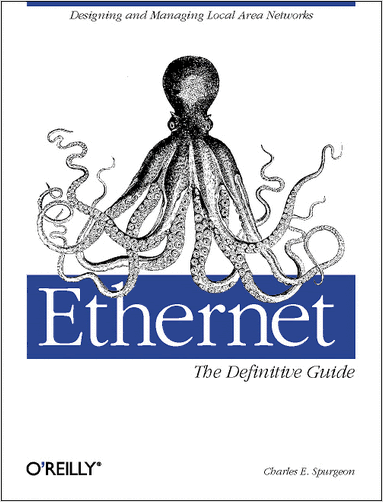
Tengo un desconocimiento casi del tema, aunque hace unos años hice un curso sobre Routers... pero es lo que tiene dejar las cosas de lado y no volverlas a tocar durante mucho tiempo. Pero adonde llego yo es, que Ethernet es un tipo de tecnología de red local que define a nivel de cableado. Para más información comprar el libro. Ahora bien el pulpo de la portada es una maravilla!!
Charles Spurgeon's latest book on Ethernet is published by O'Reilly and Associates, and features an octopus on the cover. This O'Reilly definitive guide provides a comprehensive and accurate source of information on the entire Ethernet system in a single volume. Includes 10 Mbps, 100 Mbps, and Gigabit Ethernet, as well as repeaters, switching hubs, full-duplex Ethernet, Auto-Negotiation system, specifications for all media systems, structured cabling systems for twisted-pair cabling, network management, troubleshooting, and more.
Vía Books O’reilly
Ethernet has been the flavor of choice for networking administrators since the early 1980s. Written by one of the foremost experts on Ethernet standards and configuration, Ethernet: The Definitive Guide has all the information you need to set up and maintain a scalable local area network (LAN) using Ethernet. The book includes an introduction to Ethernet and sections on media systems, how to build your Ethernet system, performance analysis, and troubleshooting.
Ethernet is a core networking technology used by every high tech business. While the basic protocols have changed little, new options such as Fast Ethernet and Gigabit Ethernet have increased the complexity of the topic. Ethernet has been the flavor of choice for networking administrators since the early 1980s because of its ease of use and scalability. Written by one of the foremost experts on Ethernet standards and configuration, Charles E. Spurgeon, Ethernet: The Definitive Guide includes everything you need to know to set up and maintain an Ethernet network. Ethernet: The Definitive Guide teaches you everything you need to know about the IEEE 802.3 Ethernet standard and its protocols. The book is logically separated into five parts:
Introduction to Ethernet provides a tour of basic Ethernet theory and operation, including a description of Ethernet frames, operation of the Media Access Control (MAC) protocol, full-duplex mode and auto-negotiation.
Ethernet Media Systems is the heart of the book. This sectionof Ethernet: The Definitive Guide shows you how to build media-specific Ethernet networks, from a basic 10BASE-T Ethernet offering 10 Mbps over twisted-pair cables, to an advanced 1000BASE-X Gigabit Ethernet, providing up to 1 Gbps of data transfer over fiber optic cables.
Building Your Ethernet System teaches you how to build twisted-pair and fiber optic media segments, as well as how to build your Ethernet using repeaters and hubs.
Performance and Troubleshooting is divided into two chapters. The first describes both the performance of a given Ethernet channel, as well as the performance of the entire network system. The second includes a tutorial on troubleshooting techniques and describes the kinds of problems network administrators are likely to encounter.
The last part of the book includes a complete glossary of terms used throughout the book, a resource list, descriptions of thick and thin coax-based Ethernet systems, a guide to AUI equipment installation and configuration, and a listing of troubleshooting numbers. This book is the definitive guide for anyone wanting to build a scalable local area network (LAN) using Ethernet.
Labels: Literatura
Humor -Bill Gates y sus tentáculos-
Published Friday, September 16, 2005 by Spyder.
Y utilizando el método Moore para conocer al enemigo...
Bill Gates
Está casado con Melinda French, y ambos ostentan el liderazgo de la Fundación Bill y Melinda Gates, dedicada a reequilibrar oportunidades en salud y educación a nivel global, especialmente en las regiones menos favorecidas, razón por la cual han sido recientemente galardonados con el Premio Príncipe de Asturias de Cooperación Internacional 2006.
Biografía
Cursó estudios en la escuela privada de élite de Lakeside, en Seattle. Esta escuela tenía ya una computadora en el año 1968. Así Gates tuvo la posibilidad de contactar pronto con la máquina y tomarle el gusto a la informática. No tardó mucho en aprender y sólo necesitó una semana para superar a su profesor. También en Lakeside, Gates conoció a Paul Allen, con quien más tarde fundaría Microsoft.
Creó la empresa de software Microsoft el 4 de abril de 1975, siendo aún alumno en la Universidad de Harvard. En 1976, abandonó la universidad y se trasladó a Albuquerque, sede de Altair, para pactar con esa empresa la cesión de un lenguaje para computadoras, el Basic, al 50% de las ventas. Al año siguiente, se enteró del éxito de la empresa Apple y de que necesitan un intérprete de Basic. Intentó presentar su versión a Apple, pero ni siquiera fue recibido.
En 1980, como Presidente de Microsoft y con ayuda de su madre, que era miembro de la junta de directores, se reunió con altos ejecutivos de IBM en Seattle. Consiguió venderles el sistema operativo DOS, aunque él aún no lo tenía y luego lo compró a muy bajo precio a un joven programador. IBM necesitaba ese sistema operativo para competir con Apple, razón por la cual la negociación era flexible. Microsoft quiso los derechos de licencia, mantenimiento, e incluso la facultad de vender el DOS a otras compañías. IBM aceptó, considerando que lo que produciría dividendos sería el hardware y no el software. Unos días después, Microsoft compró los derechos de autor del Quick and Dirty Operation System a Tim Paterson que trabajaba para la Seattle Computer Products, por 50.000 dólares, que entregó a IBM sin cambiar nada salvo el nombre a MS-DOS (Microsoft DOS).
Consciente de la importancia del entorno gráfico que había mostrado Apple (originalmente el ambiente gráfico fue desarrollado por Xerox PARC) en su ordenador Lisa, se propuso conseguir también el entorno gráfico y el "ratón" para operarlo. Mientras, Steve Jobs, fundador de Apple, inició el desarrollo del Macintosh, Bill Gates visitó Apple. Ofrecía mejorar sus hojas de cálculo y otros programas. Amenazaba con vender su material informático a IBM, con lo que obtuvo una alianza Apple-Microsoft. Microsoft se hizo con la tecnología de entorno gráfico y con el ratón, y sacó al mercado Microsoft Windows, como directo competidor de Macintosh.
Al finalizar el segundo milenio, el sistema operativo Microsoft Windows (en todas sus versiones), se utilizaba en la mayor parte de ordenadores personales del planeta.
Bill Gates encabeza la lista anual de las mayores fortunas personales realizada por la revista Forbes, con bienes calculados alrededor de los 51.000 millones de dólares americanos (2005). En 1994, adquirió un manuscrito de Leonardo da Vinci por 25 millones de dólares.
El 16 de junio de 2006 hizo pública su intención de, en julio de 2008, abandonar sus labores diarias al frente de Microsoft para dedicarse por entero a la fundación. La transición de responsabilidades será progresiva para evitar afecciones negativas en el desarrollo diario de la empresa, continuando como Presidente de Honor de la misma.
Labels: Humor
Humor -Menú gallego-
Published Thursday, September 15, 2005 by Spyder.The Casa Gallega
Spanish Covers (tapas)
Octopus to the party (pulpo a feira)
Corageous potatoes (patatas bravas)
Huge air spray with grelos (lacón con grelos)
Canes and little ones (Cañas y chiquitos)
Drink from the boot and the big joint (beba en bota y en porrón)
Thin Uncle Joseph (Fino Tío Pepe) and Thin Fifth (Fino Quinta)
They will pass from Navarra (Pacharán de Navarra)
Wines from the River Ha and the Valley of Rocks (Vinos de Rioja y Valdepeñas)
Labels: Humor
Poema de Ogden Nash -The otopus-
Published Saturday, September 10, 2005 by Spyder.Labels: Literatura, Poemas
Arte y pulpos -Escultura japonesa de marfil-
Published Thursday, September 08, 2005 by Spyder.Escultura japonesa hecha de marfil que representa a una buscadora de perlas con un pulpo entre sus brazos. Típica escena de la iconografía japonesa, donde la chica lejos de estar molesta con el pulpo, parece disfrutar con su contacto...
Woman Diver and Octopus
Ivory 76 x 55 x 34 mm, Shugetsu the First between 1764 and 1771?
A girl diver (ama), wearing nothing but a grass skirt is being ravished by an octopus. The creature's tentacles ensnares her legs and two of them curl about her breasts. She is making a token resistance but the arc of her neck, her hair tumbling down her back and the expression of pleasure on her face indicate her real feelings. Any ambiguity over the matter is dismissed when the piece is closely examined: it is possible by locking between the parted tentacles of the octopus, to see that the skirt by no means completely covers the girl, and that the embraces of the mollusc are far from displeasing.
Japanese art has always delighted in depicting women pearl divers being embraced by octopuses. Generally they are shown warding off the creature's blandishments but with this example the suggestion is that she is enjoying its attentions.
£ 290, Hindson auctions 1967.
Noticia -Pulpo Benthoctopus Longibrachus-
Published Wednesday, September 07, 2005 by Spyder.Investigadores de la UCSC
Descubren nueva especie de pulpo en el Litoral Central
Los académicos Christian Ibáñez, Javier Chong y Roger Sepúlveda describieron a una especie de tamaño mediano, que habita en la profundidad y sin saco de tinta, entre otras características.
11 de junio de 2003
Fuente: Universia
Tres investigadores de la Facultad de Ciencias de la Universidad dela Santísima Concepcióncomunicaron el hallazgo de una nueva especie de pulpo en nuestras costas denominada "Benthoctopus longibrachus".
Labels: Noticias
Arundhay Roy y el incómodo pulpo que vivía en su interior-
Published Tuesday, September 06, 2005 by Spyder.Arundhati Roy -El dios de las pequeñas cosas-
Labels: Literatura
Pulpos y literatura -Clough Williams-Ellis-
Published Saturday, September 03, 2005 by Spyder.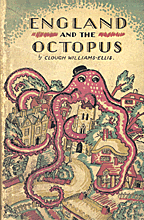
England and the Octopus
Clough Williams-Ellis
El libro fue publicado en 1928 creando una polémica al introducir el concepto de planes urbanisticos para el crecimiento de las ciudades y las zonas rurales. Clough William-Ellis fue uno de los fundadores del CPRE (Council for the Preservation of Rural England).
Este libro me recuerda al ensayo que años antes había escrito el economista Robert Thomas Malthus advirtiendo los problemas que se derivarían de un desmesurado crecimiento demográfico en su Ensayo sobre el principio de la población.
Labels: Literatura
Arte y pulpos -Steve Forrai-
Published Friday, September 02, 2005 by Spyder.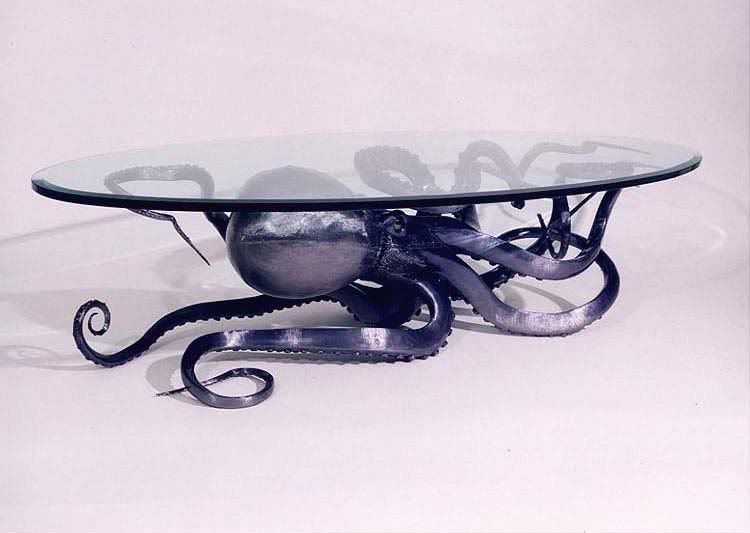
Forrai Metal Design
714.963.1853
Huntington Beach, CA
Not long ago, I had a vision of sculpting metal and began bending, shaping and fusing scrap metal tubing. Working with metal has challenged my abilities as an artist. It's been a very satisfying medium. I'm concerned with the detail and accuracy of my subject matter. Most of my projects involve hundreds of hours of planning, altering, researching and executing designs.
All my works are one of a kind and unique to this field of art. I enjoy creating custom designs for my clients. So if you have any questions or information to request, please feel free to contact me at:
mailto:steve@forraimetaldesign.com
